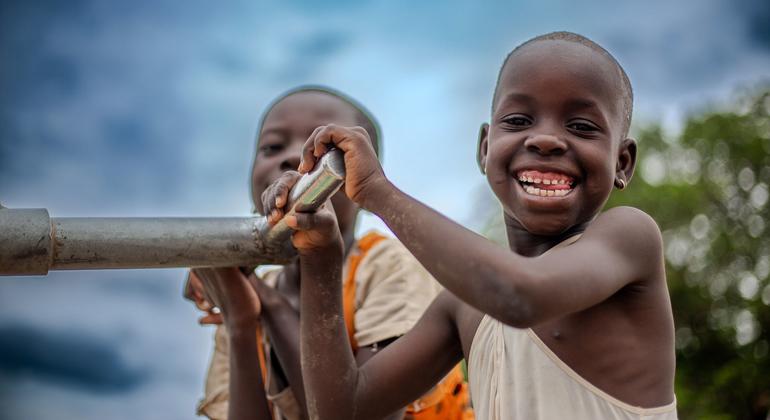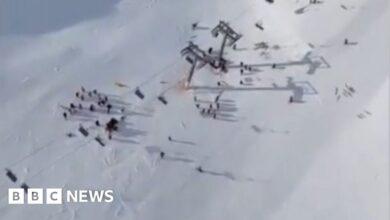Outlining a roadmap for global action on land and drought

Nearly 200 countries gathered at the 16th Conference of the Parties (COP16) to the United Nations Convention to Combat Desertification (UNCCD) and committed to prioritizing land restoration and drought resilience in the national policy and international cooperation as an essential strategy for food security and climate adaptation.
While the parties disagree on the nature of the new drought regime, they have adopted a strong position. political statement and 39 decisions that shape the path forward.
According to the newly published announcement of UNCCD Atlas of world droughts And The economics of drought resilience report, drought affects the livelihoods of 1.8 billion people worldwide, pushing already vulnerable communities to the brink. They also cost about $300 billion a year, threatening important economic sectors such as agriculture, energy and water.
Among the main results achieved at COP16 are:
- Launch of the prototype of the International Drought Resilience Observatory, the first AI-driven global platform to help countries assess and improve their capacity to cope with more severe droughts
- Mobilize private sector participation under the Business4Land initiative
- The establishment of designated caucuses for Indigenous peoples and local communities to ensure their unique perspectives and challenges are fully represented
“Today, history was made,” said Oliver Test from Australia, an Indigenous representative. “We look forward to achieving our commitment to protecting Mother Earth through a dedicated caucus and leaving this space with the confidence that our voices are heard.”

Hindou Oumarou Ibrahim, an indigenous rights campaigner, attends the COP16 desertification conference in Riyadh, Saudi Arabia.
Global drought regime
Countries have also made significant progress in laying the foundations for a future global drought regime, which they plan to complete at COP17 in Mongolia in 2026.
At COP16, more than 30 decisions were issued on key themes through the negotiation process, including migration, dust storms, enhancing the role of science, research and innovation, and empowering women. women to solve environmental challenges.
Several decisions have put new topics on the agenda, specifically environmentally sustainable agri-food systems and rangeland, which accounts for 54% of total land area. The degradation of rangelands alone threatens one-sixth of the global food supply, potentially depleting one-third of the Earth’s carbon stocks.
At the same time, more than $12 billion has been committed to addressing land challenges around the world, especially in the most vulnerable countries. Currently, about two billion people living in rural areas are among the most vulnerable in the world to desertification, land degradation and drought.
Now the work begins
COP16 is the largest and most diverse UNCCD COP to date. It attracted more than 20,000 participants, including about 3,500 from civil society, and featured more than 600 events as part of the first Action Program involving non-state actors in public works. work of the convention. It also set a record for the number of youth attendees and the largest number of private sector participants ever at a United Nations land conference, with more than 400 representatives from industries such as finance fashion, agricultural products, food and pharmaceuticals.
Now, work has begun, said UN Deputy Secretary-General Amina J. Mohammed.
“Our work does not end with the end of COP16,” she told delegates. “We must continue to tackle the climate crisis. It is a call to action for all of us to embrace inclusivity, innovation and resilience.”
She said youth and Indigenous peoples must be at the center of these conversations.
“Their minds, voices and creativity are indispensable as we create a sustainable future with new hope for generations to come.”
Important turning point
According to COP16 President, Saudi Arabia’s Minister of Environment, Water and Agriculture Abdulrahman Alfadley, the meeting also marked a turning point in raising international awareness of the urgent need to accelerate the land recovery process. belt and drought resistance.
“We hope the outcome of this session will lead to a significant change that will strengthen efforts to conserve land, reduce land degradation, build capacity to address it,” he said in his closing remarks. drought and contribute to the well-being of communities around the world”.
UN Under-Secretary-General and UNCCD Executive Secretary Ibrahim Thiaw agreed, highlighting a significant shift in the global approach to land and drought issues as well as the challenges associated with these issues. broader global issues such as climate change, biodiversity loss, food security, forced migration and global issues. stability.

In Koyli Alpha, Senegal, women work in tree nurseries established as part of the Great Green Wall Initiative.
‘The solution is within our reach’
During COP16, participants heard that UNCCD estimates that at least $2.6 trillion in total investment is needed by 2030 to restore more than a billion hectares of degraded land and build resilience against drought.
This represents $1 billion in daily investment between now and 2030 to meet global land restoration goals and combat desertification and drought.
New commitments were also announced on large-scale land restoration and drought preparedness as well as on some winning existing projects, such as the Great Green Wall, an initiative led by Europeans. Africa leads the effort to restore 100 million hectares of degraded land across the Sahel region. , raised $11.5 million from Italy and nearly $4 million from Austria.
UNCCD Executive Secretary Ibrahim Thiaw summarized a common message heard throughout COP16 in his closing speech.
“As we have discussed and witnessed, solutions are within our reach,” he said.
“The actions we take today will not only shape the future of our planet but also the lives, livelihoods and opportunities of those who depend on it.”
Read more stories about climate and the environment This.
Declaration of sacred ground

Dryland assessment of Caating, Brazil.
In a landmark decision, COP16 parties requested the establishment of an indigenous peoples caucus with the goal of ensuring that their unique perspectives and priorities are represented in the work of the Conference. Convention to combat desertification.
the Declaration of sacred groundpresented during the inaugural Indigenous Peoples Forum on December 7, highlighted their role in sustainable resource management and called for greater participation in global land and drought management. demand, including participating in land restoration efforts.
Here are some calls to action in the statement:
- We call on parties to ensure an inclusive approach to human rights and the rights of indigenous peoples in all policies and actions related to land restoration and resilience building
- We call on all parties to respect, recognize, promote and protect the rights of indigenous peoples, based on the fundamental right to self-determination, set forth in the Convention United Nations Declaration on the Rights of Indigenous Peoples and International Convention on the Elimination of Racial Discrimination and General Recommendation 23
-
We encourage UNCCD to establish a fund dedicated to Indigenous Peoples’ initiatives on recovery, conservation, desertification and drought resilience of Indigenous Peoples
Read the full Declaration on the Holy Land This.



